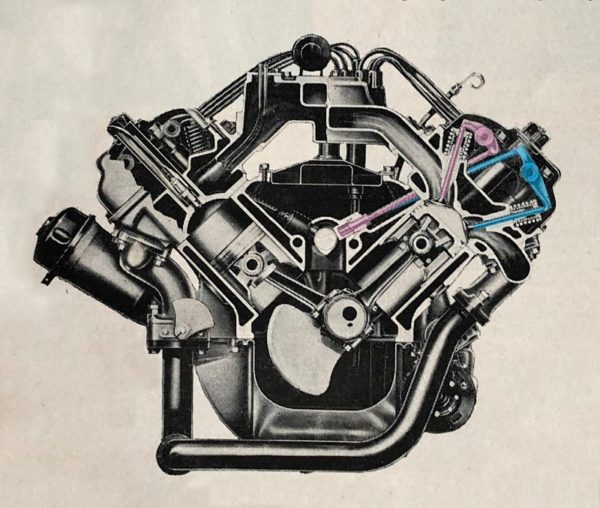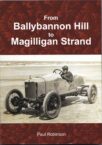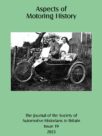
Technical Talk 7 showed how BMW, with limited funds, achieved a hemispherical combustion chamber and overhead valves in a V formation in its famous M328 engine, starting from a conventional pushrod motor. This Technical Talk tells a rather different story, of an engine of equal renown: the Chrysler Hemi.
By 1951 the trend in American automobile engines was increasingly towards higher compression, in the search for greater efficiency. The overhead-valve pushrod V-8 engine was also becoming the established norm, starting with Cadillac and Oldsmobile in 1949 and followed by Studebaker and Chrysler – with Ford introducing their Lincoln Y-block OHV engine in 1952. In a highly competitive industry, these big companies had to spread tooling and development costs over as many units as possible – which led them to lay down designs that would cope with future increases in compression.
The result was the short-stroke V-8. This was the only practical layout that gave the smoothness of an eight-cylinder with the compactness and rigidity to cope with the pounding from ever-increasing compression ratios.
Overhead valves were necessary to give good breathing and a well-shaped combustion chamber to control knock or “pinking”. Plymouth were experimenting with an overhead-valve six for a future high-compression engine, but the showroom lure of the V-8 was too great to make six cylinders the norm.
Chrysler took the search for efficiency one step further. While keeping the basic layout of the engine unchanged (rigid block, rugged lower end and single camshaft between the cylinder banks), they achieved the best possible breathing by the smart use of pushrods at different angles and rockers of different shapes, to give the classic hemispherical combustion chamber and V-formation overhead valves. The drawing shows the arrangement of the operating pushrods and rockers of the engine – for the inlet in red and for the exhaust in blue.
Chrysler released the engine in 1950 for the 1951 model year, under the name FirePower, not “Hemi” – that name was only trademarked in 1964 with a revised engine.
Many famous cars used the Hemi engine, not least Briggs Cunningham’s 1953 C5-R and the legendary 1955 Chrysler C-500 – the first of the Chrysler “Letter Series” cars. But that is a story for another time.
Drawing courtesy of the Richard Roberts Archive







Leave a Comment